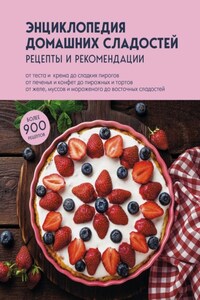Contents
Cover
Title Page
Preface
Life Before Chez Bruce
Onwards
Soups, salads and charcuterie
Gnocchi, pasta, polenta and risotto
Meat
Fish and shellfish
Desserts
Stocks, sauces, sides and fundamentals
Copyright
About the Publisher
Preface
I think it is probably fair to say that a good proportion of readers tackling cookery books written by professional chefs do so with some degree of trepidation. The glossy photographs may appeal and so might some, or even most, of the recipes, but how much of the book’s material will be doable at home? Will the ingredients be readily available? Will the techniques required be too advanced and will attempts at said recipes end in sorry, sodden and salty failure? Well, let me assure you, in my experience there are plenty of cooking nightmares lived out daily in even the most highly regarded restaurant kitchens. We under- and overcook things, burn pastry occasionally, tempers rise as soufflés fall and errant dishes get chucked towards the bin – invariably with indecent velocity. The distinction to be made at professional level is that our failures never reach the paying customer and it is only when dishes are practised and refined that the ability is grasped to knock them out with the necessary degree of speed and skill. If your earnest attempts at some of the food in this book turn out a little less appetisingly than you had hoped for, please don’t despair, and take heart in the notion that, for you to be a good cook, the broth might get spoiled a few times along the way. In short, we all make mistakes, but what we need to do in cookery, as in any other worthwhile activity I guess, is to apply some common sense and learn from them.
Life Before Chez Bruce
My parents were both teachers and as a family we all profited from long school holidays. Before Dad bravely branched out solo as a portrait painter, we relied on his salary from Wimbledon School of Art and although we were rich in time during the long summer break, there certainly was not enough cash around to send our family of five away on fancy, exotic holidays. Luckily, my parents took the view that it was better to experience longer journeys in a caravan than shorter, hotel-based trips. This meant that we were able to go away for at least a month at a time and over the years we visited France, Spain, Portugal, Switzerland, northern Italy, Austria and what was then Yugoslavia – my two brothers and I scrapping and arguing pretty well the whole way. Conditions weren’t always easy or comfortable (particularly for Mum and Dad – it can’t have been much of a holiday for them on occasion), but we had many memorable and enjoyable adventures.
France became our main country of choice and, interestingly, the vast majority of my own memories of these holidays are based around food. I am no longer able to separate one French campsite from another, or even, sadly, one stunning medieval town from the next, but my first experience as an eight year old of eating rabbit (braised with white wine and mustard, served with sauté potatoes) at a dusty, roadside Routiers café in Provence was etched razor-sharp in my little brain. I remember eating snails, coq au vin and frogs’ legs for the first time too and, far from providing the squeamish stuff of childhood dining nightmares, I recall them being delicious. Melons, courgettes, aubergines, figs, paté and apricots were all firsts for me on these trips and, to stock up the caravan’s galley before moving on, we would visit local food markets, practising our crude linguistic skills as we went. I remember the boulangeries and the faded, crumbling, fake mosaic fascias of the charcuterie and butcher shops, their beaded curtains rattling lazily in the hot sunshine.

My parents’ sterling efforts at instilling some culture into their squabbling kids did not go entirely wasted and the magnificent splendours of the Loire châteaux of Chambord, Cheverny, Amboise and Azay-le-Rideau all left their mark. But no more so than the fascination I experienced at the window of one of Tour’s exclusive patisseries, as I gazed mesmerised by the jewel-like chocolates and exquisite pastries on offer. I had never seen anything like this before in Blighty and the sheer quality and breadth of food available in Europe, and particularly France, made a big impression on me.
At the age of thirteen I went to boarding school and in one startling moment it dawned upon me that food at school was not going to be like the stuff Mum cooked at home. All kids complain of school food – mine are no different – but the tosh we endured was truly terrible. I recall scrambled eggs and tinned tomatoes for breakfast. This is a combo I actually enjoy today, but the egg component of this school preparation resembled a raft of cold, yellow polystyrene, so overcooked was it. In fact, I am convinced that nicely seasoned polystyrene would have tasted better. One particularly odious lunchtime main course was entitled ‘Chicken à la King’ and, without exception, the realisation that this little number featured on the day’s bill of fare at the dining hall brought howls of protest from us all. Its name made us snigger too, as it was evidently neither a dish fit for royalty nor did it contain any chicken. There were, however, huge hunks of skin floating amid the thick floury sauce and one had to trawl carefully through it to avoid them.








